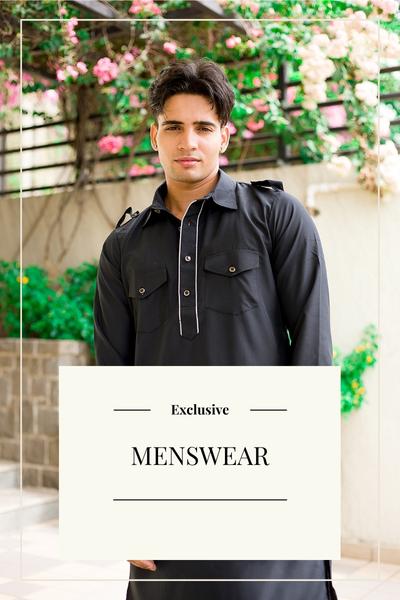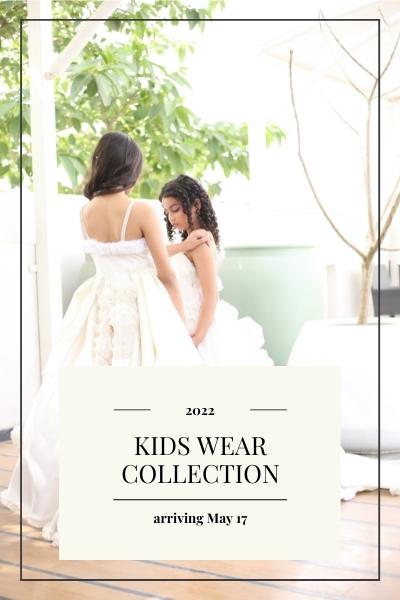Traditional Or Contemporary Fashion - What, When, Why...
Tradition Vs Contemporary
There is no denying that fashion has changed tremendously with time. What used to be considered “in” back in the day might not be relevant today. Traditional Indian clothing has undergone a transformation to provide contemporary Indian clothing that is perfect for modern living. Fashion has been apparent since the early humans. People have had to cover themselves which is why they had to turn to clothes. With the passage of time, many new trends have inspired what people wear.
Since fashion allows people to express their personality, traditional clothing has been made to form a bond among communities and ensure that everyone felt like one big family. It is crucial that you understand that there is a huge difference between style and fashion. The former refers to personal choices, whereas, the latter tends to be more homogenous.
If you are interested in how far contemporary fashion has come and whether Indians have ditched traditional clothing or not, you have come to the right place. This post shares all the information you need to know about the fashion industry in India and where traditional Indian clothing stands in today’s society. So, what are you waiting for? Let’s dive right in.
How The Fashion Has Evolved?
Traditional Indian clothing represents the identity and culture of the people. Regional and national costumes have dictated fashion. When people wear traditional clothing, they are able to uphold cultural traditions. India is a country that has a rich culture and celebrates numerous festivals.
Fashion is a huge part of the tradition. Over the last few decades, the fashion industry has developed and is bringing about significant change. In addition to this, globalization has had a huge impact on what people wear today.
Every person strives to keep up with the latest trends. On top of this, the media has also played a huge role in what people wear. It has been highly effective at convincing people to try out new clothes and accessories. Street style has been transformed with time. As one of the biggest garment exporters, Indian clothing has seen all types of highs and lows.
The fact is that Indian fashion has historical and cultural influences. Ancient Indian clothing mostly comprised clothing that was tied to the body. From the dhoti to the turban and sari, traditional Indian clothing was just wrapped around. When the Muslim empires expanded into India, it brought about significant change. Tailored and stitched garments became a thing. Ever since women’s clothing has been highly versatile.
In recent times, versatility has increased as fashion brands have blended modern elements with traditional clothing. Salwar kameez and other clothes like lungi and sherwani along with the Nehru jacket are still considered a staple in India. British rule and the Western world have exposed local designers to western forms of clothing such as pants, trousers, tuxedos, blazers, gowns, dresses, and skirts. This has led to a unique style emerging.
How Western World Fashion Has Influenced The Latest Designers?
Contemporary Indian clothing incorporates international trends. Unlike in the past when chunky ornaments were the main deal, bright colors, bell bottoms, and polka dots have taken over. Women are finally free to wear anything they want and designers are taking advantage of this fact to introduce some of the most exquisite garments that can even be worn in Western society.
The freedom that the Western world has brought has had a huge impact on the latest designers who have managed to introduce modern bold choices which women would not wear back in the day. The kameez that is available today can be worn with jeans.
Similarly, the salwar is worn with t-shirts and tops. Denim is also being more widely used in garments instead of the traditional benarasi or chikankari. There has been a switch from handcrafted fabrics toward machine-made options. Moreover, cotton, linen, and khadi have been replaced by exquisite materials such as satin and chiffon.
As the internet and TV have become more accessible in India, designers have started producing globalized clothes such as one-piece garments, floral gowns, skirts, halter tops, and sportswear. Not only do men wear jeans and a T-shirt but so do women. The designers have introduced pants, shirts, jackets, capris, and shorts by fusing Indian and Western fashion. This ensures femininity, practicality, and comfort. Thus, just about every label manages to satisfy young, old, college-going, and every type of woman in the country.
The fact is that more Indians consume Western media than ever before. This has led to wider acceptance and expectance of similar clothing options. Furthermore, international brands have also established themselves in the market and are giving local designers a difficult time.
Some of the leading brands that are enjoying an impressive market share include Arrow, Raymond, Louis Phillipe, and Van Heusen. The denim industry has taken over, with brands like Pepe Jeans, Seven Jeans, Levi’s, and Lee forcing local designers to introduce more denim pieces. They are even targeting children's wear. It shows the effects of globalization.
The international exposure has resulted in many Indian designers experimenting with fashion styles and trends that they would otherwise not try out. There are many big fashion schools throughout the country where Western design is taught. On top of this, designers are seeking exposure by attending fashion trends across the globe and targeting the Indian diaspora that can be found in just about every corner of the globe.
Both womenswear and menswear have experienced tremendous change. The fusion of Indian and Western fashion has also changed the dressing sense of the local populace. Furthermore, designer wear outfits are no longer reserved for the upper class. Today, just about every person can get their hands on the latest pieces thanks to mass production.
Why Traditional Fashion Will Never Be Lost Even As We Push The Boundaries?
Despite everything India has witnessed over the year, people are patriotic when it comes to traditional fashion. This is why traditional Indian clothing will continue to reign supreme. Besides, it is a staple for attending the many festivities that are held throughout the year.
The regional variations only make the country more diverse. No matter how big of an influence the West might have on the country, Indian clothing is here to stay. Indians are proud to wear salwar kameez, sari, and dhoti regardless of where they might be in the world.
The Indian diaspora also wears traditional clothing, especially during celebrations like Diwali and Holi. In fact, there has been a revival of ethnocultural clothing over the years. Traditional arts and crafts have taken over. Even international fashion brands are tapping into the local market by employing in-house fashion designers. It cares to show that traditional Indian clothing will continue to be worn for the time to come. The elegance and colorfulness of Indian costumes are hard to beat.
Besides, the clothes are designed to suit the climate and provide the ultimate comfort. There are various outfits in each state that highlight the cultural heritage of the region. Even common outfits are worn with variation throughout the country. Creative transformation is apparent everywhere you look.
There are plenty of local designers who have embraced the translucent and sheer fabrics of the region to provide fashionable clothing. They know how to bring out the beauty in women. Thus, bejeweled saris are just as fashionable.
There is an endless variety of bold and bright saris. The stunning hues of the colors provide a surreal look that cannot be found elsewhere. Although many countries around the world regularly wear Western clothing, Indians still wear their traditional clothes with great pride. Moreover, Indian leaders such as Mahatma Gandhi embraced the dhoti and proved to the world just how simple and elegant the outfit was.
To keep up with the times, designers are only tweaking traditional clothing to offer more hues and options. Clothing for men has also been revamped to cater to metrosexual men who care about the way they look. For instance, the dhotis available today are not difficult to wear as they can be easily worn.
Only more designs have been introduced as people still enjoy wearing traditional Indian clothing along with contemporary Indian clothing. This is why the two fashions will simply go hand in hand and show the world that Indians hold to their roots. By wearing traditional outfits, it is possible for Indians to remember their glorious past and celebrate the creativity of the region. There is no other place in the world that is as diverse.















